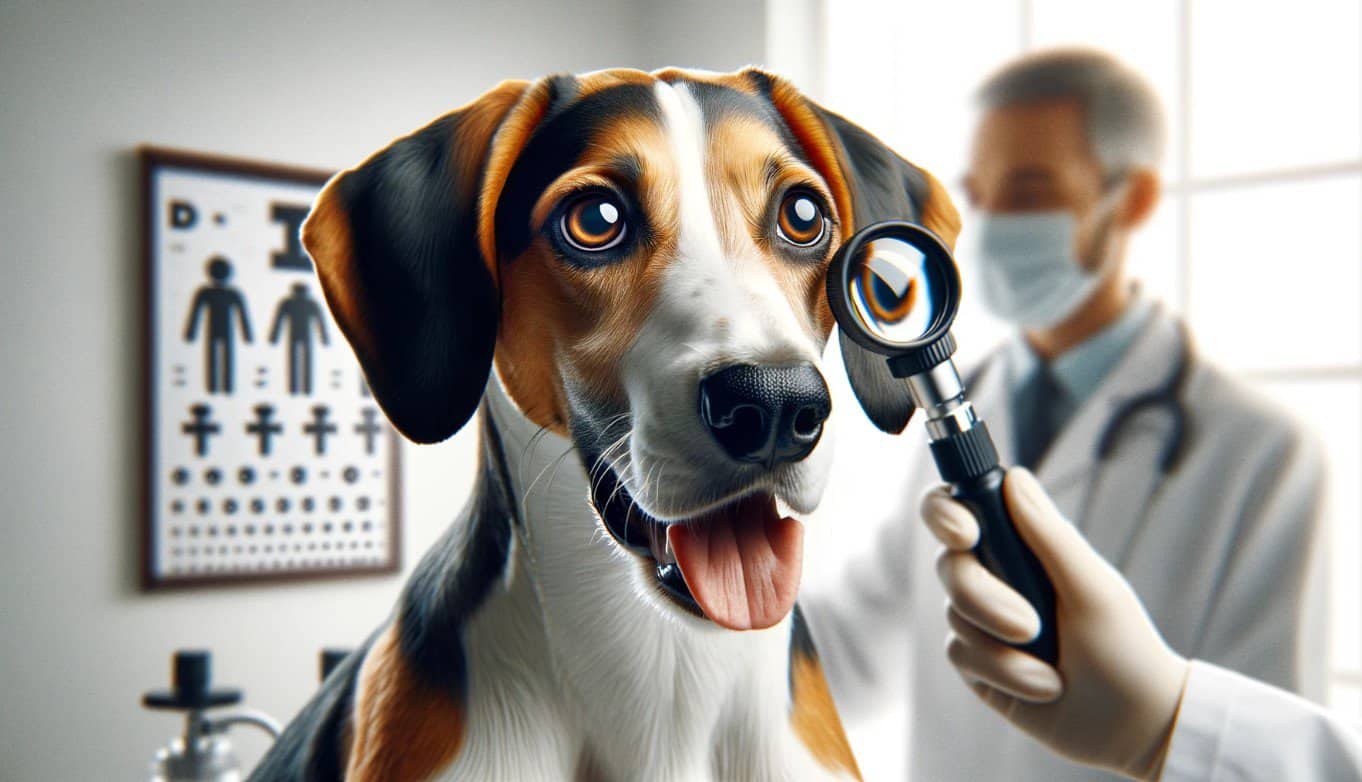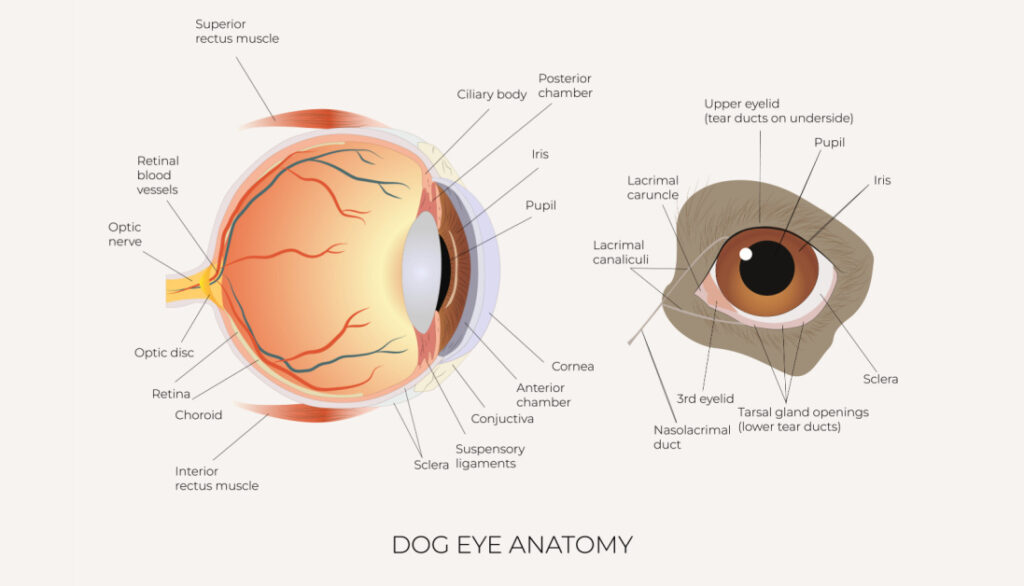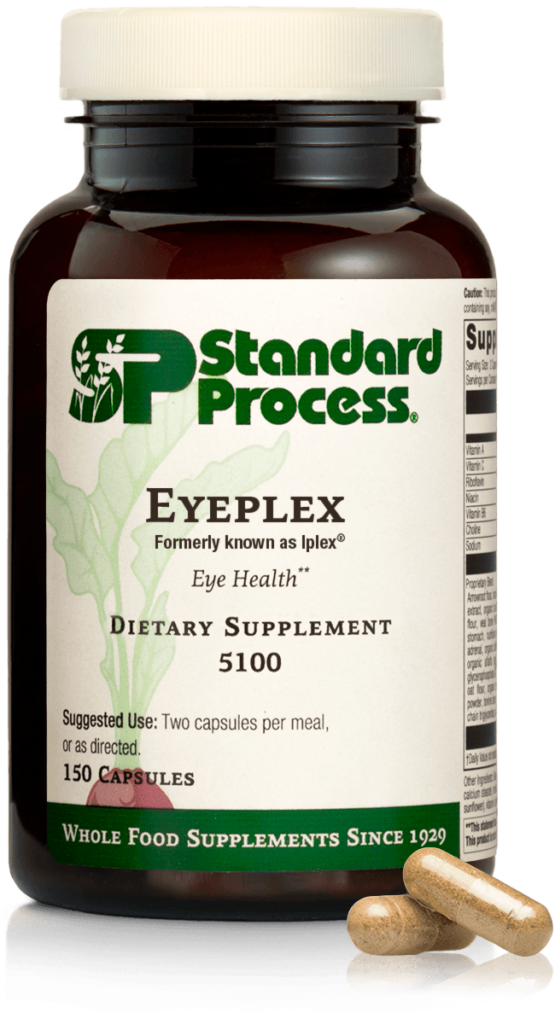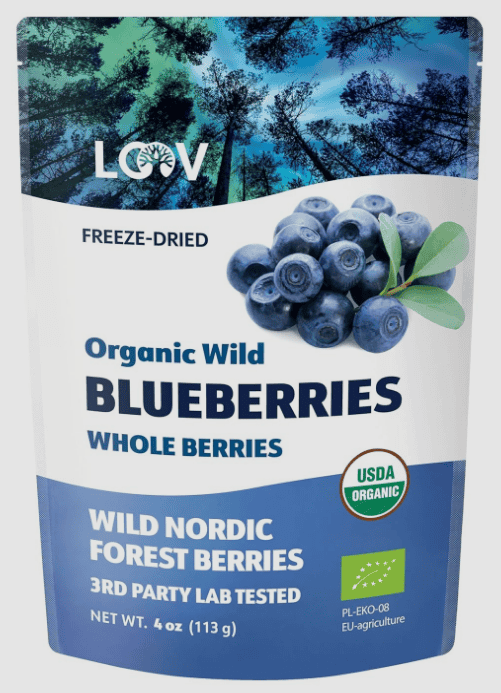Welcome, fellow dog lovers! Today, we’re focusing on a topic close to my heart – American Foxhound Eye Health. As a holistic veterinarian, I’ve seen my fair share of eye issues in various breeds, but our lovely American Foxhounds often face unique challenges. With their keen sight and energetic spirits, maintaining their eye health is crucial.
Unfortunately, our Foxhound friends can be prone to specific eye problems. But don’t fret – with the right knowledge, we can help keep their peepers in top shape. From understanding their unique eye structure, to identifying common issues, and even preventive measures – we’ll cover it all. We’ll also explore the importance of a holistic diet, environmental hygiene, and routine eye care.

Whether you’re a seasoned Foxhound parent or considering bringing one of these delightful dogs into your home, this guide is for you. So, let’s learn all about American Foxhound eye care. Remember, our goal is to ensure our furry friends live long, happy, and healthy lives – and that includes taking care of their beautiful eyes!
Understanding Breed Specific Eye Structure
As a holistic veterinarian, I consider the unique anatomy and physiology of each breed when assessing their overall health. This is particularly important when it comes to American Foxhound eye health. Their eye structure is distinctive and understanding it can help us take better care of our beloved pets.
American Foxhounds have large, expressive eyes that are typically brown or hazel. Their eyes are set well apart, giving them a wide field of vision, which is ideal for their hunting background. The breed’s eye structure is designed to help them spot prey from a distance, and to keep a keen watch on their surroundings. This breed’s eyes are protected by a strong brow ridge, which helps to shield the eyes from debris while they’re on the move.
However, this unique eye structure also puts the American Foxhound at risk for certain eye health issues. Their large, protruding eyes can be prone to injury or irritation from foreign bodies. The eyes’ position, set deep into the skull, can also contribute to problems with tear production and drainage, leading to conditions like dry eye or tear stains.
Additionally, the breed’s long, droopy eyelids can create a pocket where debris can collect, increasing the risk of eye infections. Furthermore, these eyelids can sometimes roll inwards, a condition known as entropion, causing the eyelashes to scrape against the cornea and potentially lead to ulcers or other serious eye problems.
As a dog parent, it’s important to understand these breed-specific eye health issues. Regular check-ups, including a thorough eye exam, are crucial in catching any potential problems early. As with all aspects of your Foxhound’s health, prevention is always the best approach. So, let’s discuss the common eye issues your American Foxhound might face, and explore ways to keep their eyes healthy and bright.

Common Eye Issues In American Foxhound
As a veterinarian, it’s my job to help you understand the potential health issues your American Foxhound may face, specifically concerning their eye health. American Foxhounds are a robust breed, but they do have a few common eye issues that you should be aware of. Let’s delve into a few of these problems and discuss their symptoms and potential treatments.
1. Progressive Retinal Atrophy (PRA)
Progressive Retinal Atrophy is a group of genetic diseases that affect the retina, leading to gradual vision loss. American Foxhounds can experience this condition, and symptoms include night blindness and dilated pupils. Although there is no cure for PRA, early detection can help manage the condition better.
2. Cataracts
Cataracts are another common issue in American Foxhound Eye Health. It’s a condition where the lens of the eye becomes opaque, leading to cloudy vision or even blindness. Symptoms include a bluish, gray, or white color in the pupil. Cataracts can be removed surgically to restore vision.
3. Corneal Dystrophy
Corneal Dystrophy is a condition that affects the cornea, the clear front surface of the eye. It’s characterized by abnormal material deposits in the cornea, causing opacity. Symptoms include cloudiness or specks in the cornea. While there is no cure, the condition is usually not painful and doesn’t significantly affect vision.
4. Distichiasis
Distichiasis is a condition where extra eyelashes grow from the glands of the upper or lower eyelid, causing irritation to the eye. Symptoms can include excessive blinking, tearing, or inflammation. Treatment options range from lubricating eye drops to surgical removal of the extra eyelashes.
Remember, regular check-ups are crucial for maintaining your American Foxhound’s eye health. Early detection can often lead to more effective treatments and better outcomes. If you notice any changes in your dog’s eyes or behavior, don’t hesitate to contact your vet.

Prevention of Eye Problems
Ensuring your American Foxhound gets the right nutrients for optimal eye health is essential for maintaining clear vision and preventing age-related issues. Natural, nutrient-rich foods and supplements can play a key role in supporting their eyesight. From vitamin A-packed freeze-dried liver treats to antioxidant-rich blueberries and targeted supplements like Eyeplex by Standard Process, there are several ways to nourish your dog’s eyes. In this section, we’ll explore how these powerful ingredients contribute to long-term vision health and overall well-being.
Eyeplex by Standard Process
Eyeplex by Standard Process is a specialized supplement designed to support your American Foxhound’s eye health with a blend of essential nutrients. Formulated with key vitamins, minerals, and antioxidants, Eyeplex helps protect against oxidative stress, supports retinal function, and promotes overall vision health. Ingredients like vitamin A, vitamin C, and zinc contribute to maintaining strong eyesight, while whole food ingredients provide additional phytonutrients for cellular protection. Adding Eyeplex to your American Foxhound’s diet can be especially beneficial for aging dogs or breeds prone to eye conditions, offering targeted nutritional support to keep their vision sharp and healthy for years to come.

Freeze-Dried Blueberries
Freeze-dried blueberries are a powerhouse of antioxidants that can help protect your American Foxhound’s eyes from oxidative stress and age-related damage. Rich in vitamins C and E, as well as anthocyanins, these tiny but mighty berries help combat free radicals that can contribute to eye diseases like cataracts and macular degeneration. Incorporating freeze-dried blueberries into your dog’s diet provides a natural and delicious way to support retinal health, reduce inflammation, and promote overall vision longevity. Plus, they’re a low-calorie, dog-friendly treat that makes a great addition to a balanced diet for long-term eye health.

Freeze-Dried Liver
Freeze-dried liver treats are an excellent natural source of vitamin A, an essential nutrient for your American Foxhound’s eye health. Vitamin A plays a crucial role in maintaining good vision, especially in low-light conditions, while also supporting overall immune function and skin health. Since liver is rich in bioavailable vitamin A, incorporating freeze-dried liver treats into your dog’s diet provides a convenient and nutritious way to promote optimal eye function. Just be sure to feed them in moderation, as excessive vitamin A can lead to toxicity. Adding these nutrient-packed treats to your pup’s routine is a simple, tasty way to support their long-term vision and well-being!

By prioritizing your American Foxhound’s eye health through a balanced diet and nutritional supplements, you can help prevent many common eye issues. These simple steps can go a long way in ensuring your pup’s eyes stay healthy and clear for years to come.
Environmental Hygiene To Reduce Eye Problems
As a loving American Foxhound parent, you are always on the lookout for ways to ensure your fur-baby’s overall health and well-being. One crucial aspect that often gets overlooked is the importance of maintaining a clean and healthy environment for your dog, especially when it comes to their eye health. Here are some important factors to consider:
Indoor Air Quality
Our homes are filled with potential irritants that can affect our American Foxhound Eye Health. Dust, pollen, and other airborne particles can cause eye irritation, leading to issues like conjunctivitis. Therefore, improving your indoor air quality is essential. You can achieve this by:
- Regularly cleaning and vacuuming your home to reduce dust and dander.
- Using air purifiers with HEPA filters to capture small particles that could irritate your dog’s eyes.
- Ensuring proper ventilation in your home by opening windows or using exhaust fans.
Sprays, Diffusers, Candles, Incense
While we all love a good-smelling home, certain scented products like sprays, diffusers, candles, and incense can cause eye irritation in our American Foxhounds. The chemicals used in these products can be harsh on your dog’s eyes, leading to redness, itching, and even more serious eye conditions. So, what can you do?
- Try to limit the use of such products, especially in areas where your dog spends a lot of time.
- Opt for natural or unscented products whenever possible.
- Ensure proper ventilation when using these products to help disperse any potential irritants.
Remember, your dog’s eyes are just as sensitive, if not more so, than your own. So, it’s essential to keep their environment as clean and irritant-free as possible. By taking these simple steps, you can help prevent eye problems and ensure your American Foxhound’s eyes stay healthy and clear.
Being proactive about your American Foxhound Eye Health will not only save you from potential expensive vet bills but also ensure your furry friend leads a comfortable and happy life. After all, a healthy dog is a happy dog!

Hygiene Maintenance To Reduce Eye Problems
When it comes to the eye health of your American Foxhound, consistent care and maintenance should be part of your routine. This breed is prone to certain eye conditions, so being proactive about their eye health can help prevent issues or catch them early when they are most treatable. Here are some tips on how to properly care for your American Foxhound’s eyes.
Daily & Weekly Care
On a daily basis, check your American Foxhound’s eyes for any signs of redness, swelling, or discharge. These could be signs of an infection or other eye problems. Use a soft, damp cloth to gently wipe away any crust or discharge from the corners of their eyes. Never wipe across the eye, always from the inside corner outward.
Each week, take a closer look at your dog’s eyes. They should be clear and bright, with the area around the eyeball white. The pupils should be equal in size and there should not be tearing, discharge or any crust in the corners of the eyes. If you notice anything unusual, contact your vet immediately.
Monitoring Hair Length, Nail Length, and Bath Frequency
The hair around your Foxhound’s eyes should be kept short to prevent it from irritating their eyes. Regular grooming can help with this. Similarly, long nails can lead to accidental eye injuries during scratching. Regular nail trims can prevent this from happening.
When it comes to bathing your dog, be careful not to get shampoo or water in their eyes as this can cause irritation. Use a tear-free dog shampoo and always protect your dog’s eyes during bath time. After the bath, dry your dog’s face thoroughly to prevent moisture from causing eye issues.
Finally, regular vet check-ups are crucial for maintaining your American Foxhound’s eye health. Your vet can conduct a more thorough eye examination and spot potential issues early. If your dog is over the age of seven, they should have their eyes checked every six months as they are at a higher risk for developing age-related eye conditions.
Remember, your American Foxhound’s eyes are a window to their health. By taking care of their eyes, you’re helping to ensure their overall well-being. Keep up with regular eye care and don’t hesitate to contact your vet if you notice anything unusual. Your American Foxhound relies on you for their health, so be sure to take their eye care seriously.
Frequently Asked Questions
1. What are common eye health conditions in American Foxhounds?
Common eye health conditions in American Foxhounds include:
- Progressive Retinal Atrophy (PRA)
- Cataracts
- Glaucoma
- Corneal Ulcers
2. How can I identify if my American Foxhound has an eye health problem?
Look out for the following signs that may indicate an eye health problem:
- Excessive tearing or discharge
- Redness or inflammation
- Cloudiness or opacity in the eyes
- Squinting or rubbing of the eyes
- Changes in vision or difficulty seeing
3. Can eye health conditions in American Foxhounds be treated?
Yes, many eye health conditions in American Foxhounds can be treated. However, the specific treatment options depend on the condition and its severity. It is important to consult with a veterinarian for proper diagnosis and treatment recommendations.
4. How can I prevent eye health problems in my American Foxhound?
To help prevent eye health problems in your American Foxhound, consider the following:
- Regular veterinary check-ups to monitor eye health
- Keeping the eyes clean and free from debris
- Avoiding exposure to irritants or chemicals
- Providing a balanced diet with essential nutrients
- Protecting the eyes from injury or trauma
5. When should I seek veterinary care for my American Foxhound’s eye health?
If you notice any signs of eye discomfort, changes in vision, or suspect an eye injury, it is recommended to seek veterinary care promptly. Early detection and treatment can help prevent further complications and ensure the well-being of your American Foxhound.
